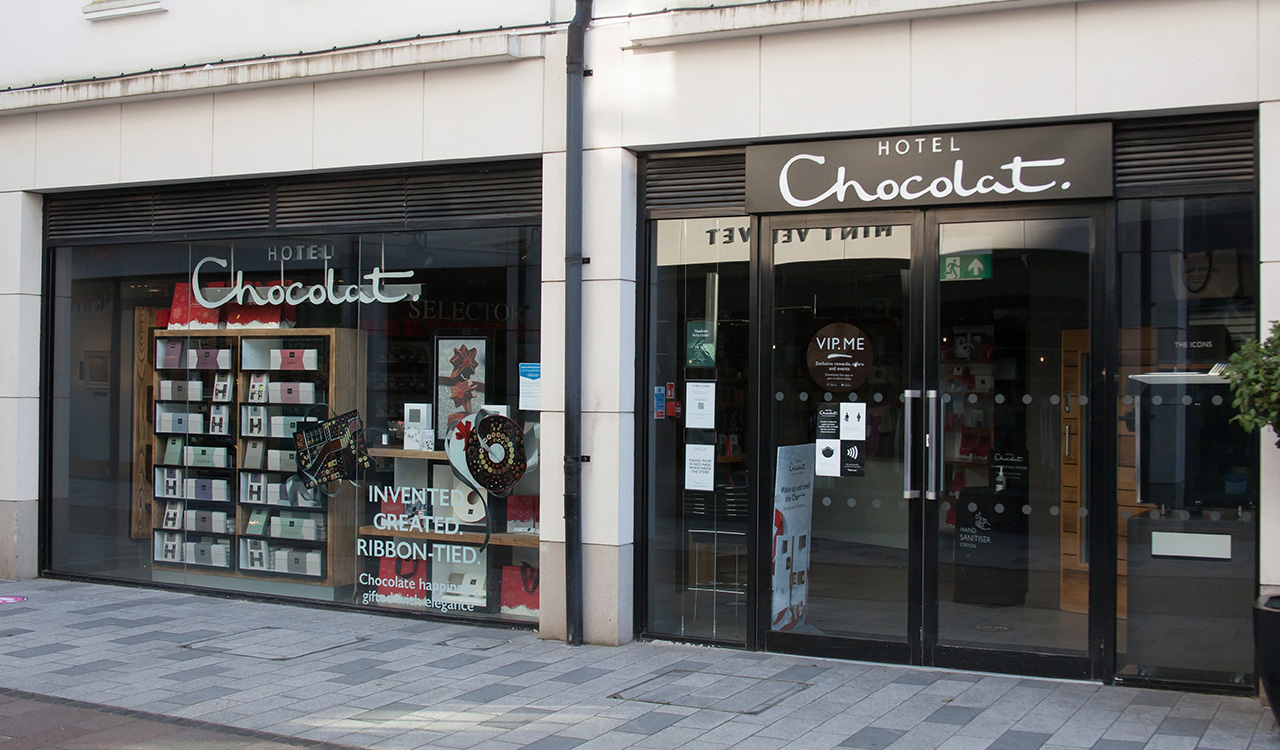I have been bombarded with news stories speculating on the mall’s new proposition, and I suddenly had a 25-year-old flashback. The aha moment reminded me just how long these so-called new propositions have been gestating.
Mall Fall
Deep in my aging memory banks, I recalled a pivotal piece of journalism published in Metropolis Magazine eons ago. With Google’s assistance, the May 1999 article resurfaced with its focus on reuse and was entitled “Call the Mall Doctor.”
Journalist Ellen Barry summarized: “Existing buildings, whether the Pantheon or your local mall, are repositories of materials, human labor, and embodied energy that must not be wasted…thus, the focus of architectural practice must move from new construction to responsible reuse.” A reread reminded me about the length and trajectory of mall fall, as well as just how predictable it was 25 years ago.
The persistent subject of overstoring had retail prognosticators at the time predicting that between 2000 and 2010, 8,600 malls and shopping centers would go bankrupt and be adapted for other uses.
Going back even further to 1992 (that’s two years before Amazon’s launch), Price Waterhouse (now PricewaterhouseCoopers) predicted that 15 to 20 percent of the existing malls would go dark by 2000. Remember, that preceded the early 2000s economic downturn and dot.com meltdown, and the 2008 great recession.
Hindsight is 20/20
In 1999, Metropolis reached out to me as an industry consultant on the subject of “the next mall chapter.” At the time, I was midway through a 35-year run as founder of SteinDesign, a boutique retail design firm based in Minneapolis. I was both shocked and delighted.
I postulated all those years ago that the malls might evolve to become “living-working-selling environments,” implying a mixed-use model. At the other end of the retail design practice spectrum, renowned architect Jon Jerde (1940-2015) said he dreamed of transforming dead malls into urban villages: “I think these are giant placeholders waiting for their real life.” In retrospect, neither of us was a genius prophet, just objective industry observers. But you have to wonder why we’re still talking about the same thing 25 years later.
Built For the Moment
The late 20th century shop ‘til you drop frenzy contributed to mall sprawl fed by multiple factors. Investors and developers were motivated by accelerated depreciation. Build it, write it down, and sell it a few years later for a profit. The funds were as easy to come by as finding the specialty retailers to fill the mall space after those sweet deals were cut with department store anchors.
While retailers of the day all had remodeling clauses in their leases, the malls had no such requirements. By the 90s, many of these 20-year-old megamalls were getting very tired looking. Also, demographics were changing with the movement from suburbs to cities. Developers were in online e-commerce denial (yes, even in 1999 that was a thing), and many of them were baby boomers building for the moment and not for the future. All things considered, the mall meltdown seemed inevitable.
As a social institution, the mall became tightly woven into popular culture, from Mallrats to mall walkers and on TV (Shop ‘Til You Drop) and in music (the Valley Girl soundtrack).
Mall Burnout
The fever pitch accelerated in 1990 with 19 new mall openings but dropped off precipitously thereafter. Nothing about these monoliths was very monolithic. Their locations, ownership and management, anchors, and co-tenancies varied greatly. These were the dynamic variables that influenced their long-term value and viability.
According to the International Council of Shopping Centers (ICSC), it reached a peak of 1,500 enclosed centers in 2005. The last new enclosed mall was built in 2006, and between 2007 and 2009, 400 of the largest U.S. malls closed.
The Numbers Game
Green Street Advisors rates malls using a 10-point rating system with A++ at the top and C- at the bottom. Generally, an A++ mall average can produce as high as $1,100-per-square- foot, a B mall about $425 p/s/ft, and a C mall around $250 p/s/ft.
As of 2021, approximately 1,000 enclosed malls remained in the U.S. This included about 200 Category A malls and approximately 300 B+ malls, according to Green Street. These top-tier players represent the likely field of survivors but with many caveats. They have become the subject of the popular mall reimagination discussion. Not surprisingly, these top-tier malls are owned and managed by some of the deepest pockets in the industry, including Simon Property Group, Brookfield Properties, and SITE Centers Corp, previously known as DDR Corp.
Transactional to Experiential
The retail survival playbook has become all too familiar. It is predicated on turning single-use, transactional retail real estate into multiuse, experiential retail, service, entertainment, hospitality, recreational and living environments. Think: From storing to exploring. Ironically, this theme closely emulates what Austrian Architect Victor Gruen had in mind when he initially conceived the first major indoor mall back in 1956, Southdale Shopping Center in Edina, Minnesota.
Sadly, Gruen’s vision to remake “downtown in the suburbs” included surrounding the center with housing, apartment buildings, schools, medical facilities, and natural amenities such as a lake and parks was highjacked by Gruen’s patrons and 500-acre site owners Dayton Development Company (tied to Dayton’s Department stores and founders of Target).
From Triage to Transformation
Many of the A and B+ class property owners and developers have been in continuous triage mode, undergoing tenant remixing and redevelopment. Meanwhile, a visionary group of owners and developers who understand the vast implications of demographic changes, unified commerce, and new retail are rewriting the mall playbook. The new formulas include multifamily housing, open-air retail, a wide range of food and entertainment, co-working spaces, healthcare, wellness, fitness facilities, recommerce, and even farmers’ markets. They are designed to appeal to work-at-home millennials as well as empty nesters – and to entice and engage local residents.
One such project is the Dallas-based Centennial Real Estate’s redevelopment of Hawthorn Mall in the Chicago suburb of Vernon Hills. With the new emphasis on walkability and dwell time, developers understand the benefits of lush green spaces and outdoor activity centers to evoke an emotional sense of place. Initially built in 1973, Hawthorn Mall’s 2019 redevelopment included new retail and dining options, luxury multifamily housing and indoor/outdoor gathering spaces. A second phase will include a three-acre outdoor park and plaza, 162 units of seniors housing and 109,000 square feet of open-air retail.
In Montreal, Quebec Royalmount, a $7 billion mixed-use development, is expected to open in 2024. It will feature retail, restaurants, entertainment, and housing, all surrounding a central park, and will eventually house 60 restaurants and 170 stores in an 824,000-square-foot, two-level retail and lifestyle complex. According to Andrew Lutfy, CEO of developer Carbonleo, he expects Royalmount to become the number one destination in eastern Canada for retail, dining, and entertainment.
It Takes a Village
The Chicago and Montreal projects both represent massive, clean-slate redevelopments. However, many more of the healthier A, A-, and B+ malls are undergoing more strategic but no less significant reimagination makeovers.
Right in my own backyard, the Brookfield Properties-owned Ridgedale Center in Minnetonka, Minnesota is undergoing a transformation that emphasizes a new relationship with place and connection to the local community. What makes this transformation particularly interesting is the degree to which the City of Minnetonka has influenced and participated in the process, dating back over a decade.
In 2012, the city commissioned the Ridgedale Village Center Study to develop a vision for the future of Ridgedale Center. Guidelines for the enhancement included transforming the retail center into a mixed-use community and improving pedestrian access, connectivity, and walkability for the surrounding community.
In 2018, an early study recommended the transformation of a five-acre parcel on the southwest corner of the Ridgedale Center parking lot which served as overflow parking for JCPenney. The schematic design plan was anchored by a new six-story, 168-unit, 55 years and older luxury apartment building, fronted by a new park. Developer Trammel Crow and High Street Residential planned to donate a two-acre portion of the site to the City of Minnetonka for the park’s development. The design project was awarded to the nationally recognized, local Damon Farber Landscape Architects.
The city’s wish list suggested, “the park have an open lawn, a plaza with a stage, a fountain, play area and an area for public art, as well as a shelter.” In May of this year, Ridgedale Commons was officially unveiled, with a grand ribbon cutting along with the expected fanfare. Most impressed were the young “water babies” trying to anticipate where the next 20-foot waterspout would emerge from the massive interactive fountain. A few days later the Commons hosted a farmers’ market, and the experience was fulfilled: a parking lot no more.
The park is just one component of a massive $4.4 million investment the city committed to. It included new parkways, walkways, major re-landscaping, and site amenities. It resulted in community place-making with improved pedestrian access and connectivity that the traditional auto-oriented mall lacked.
Retailers Thinking Outside the Box, Literally
This project suggests that successful long-term mall viability and reinvention will become a public and private sector shared effort. However, it must also involve the retailers themselves. Replacing vanishing anchor tenants has been a major challenge (a case in point is Ridgedale’s long-vacant Sears). In June 2022, after a massive reconstruction of the nation’s third Dick’s House of Sport, along with Planet Fitness, filled the retail bill. Dick’s new 125,000-square-foot sports emporiums not only promote “immersive product engagement,” but the prototype design turns itself inside out to attract the community. They feature an outdoor, Olympic-grade running track, a soccer field, and a hockey rink. Their ability to act as real-time testing grounds is only part of the picture. Dick’s is making a major investment in community sports by engaging local hockey teams through ice-time rental and family open skating on their stadium-lit, outdoor ice rink. Summer camp and soccer sports programs are also planned.
Winning Formula
These examples of the mall’s new proposition reflect their roles as community magnets. They celebrate an immersive engagement, learning, socialization, and commerce. Ridgedale’s efforts in conjunction with the city of Minnetonka, along with that of Trammel Crow and High Street Residential partnership, were the necessary collaborations to begin to recast the old mold. Major tenants like Dick’s House of Sport also contribute to the evolutionary reimagination of malls.
As for the rest of the 400-600 probable long-term mall survivors (and I’m being optimistic), it will take authentic cooperative planning and deep pockets to regain and maintain their long-term relevance and viability through the next quarter century… and beyond.





